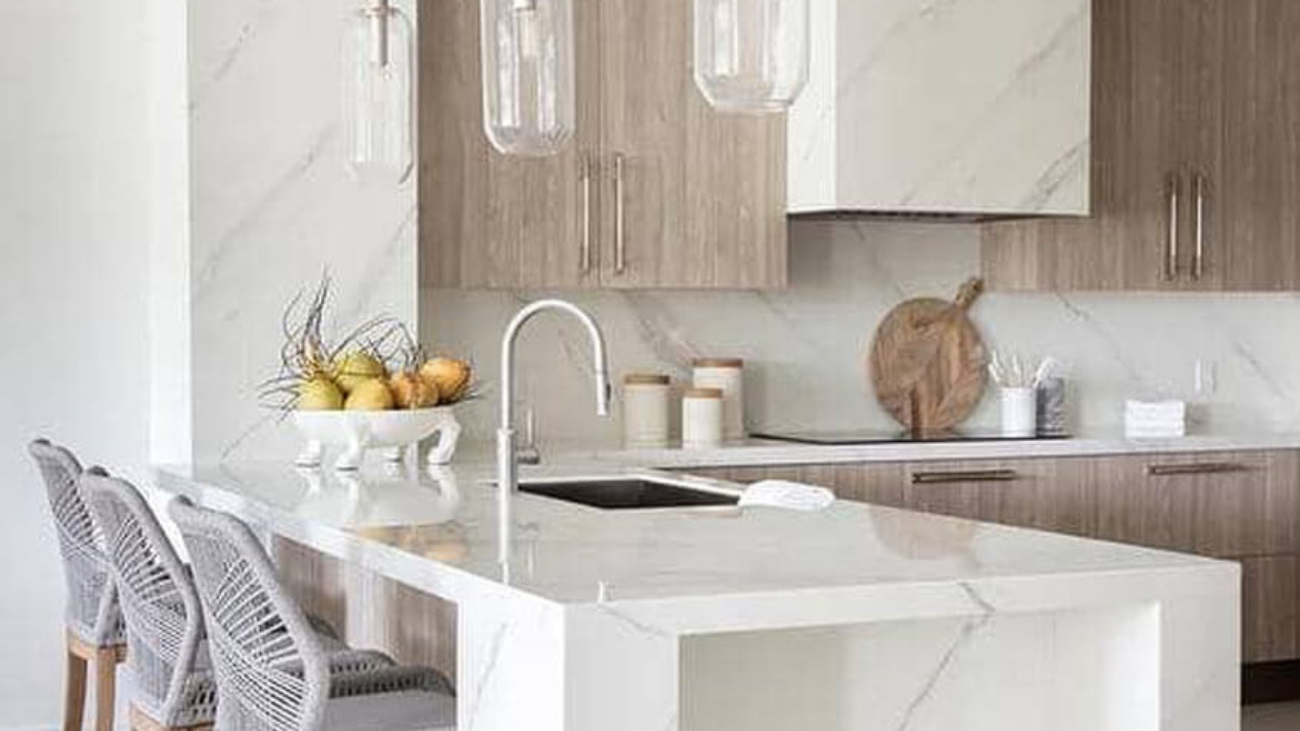The KBIS In Review: Voices From the Industry article by Chelsie Butler highlights how pet-friendly design is becoming an essential part of modern kitchen and bath projects — a trend that’s as thoughtful as it is functional (kbbonline.com). Let’s explore how this translates into real-life spaces!
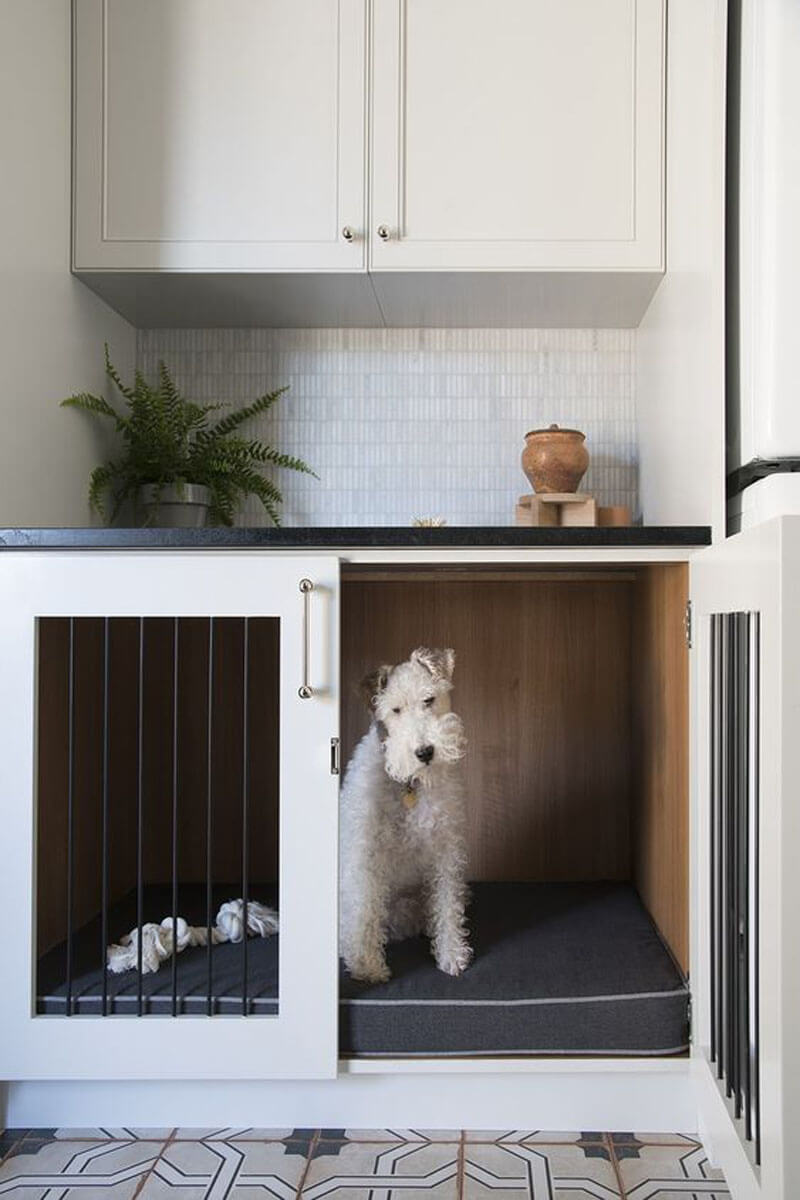
- Built-In Pet Crate Under Cabinetry
Offer your pets a secure and integrated nook without disrupting the kitchen flow. It’s both discreet and stylish—a design win for pet comfort and aesthetics.
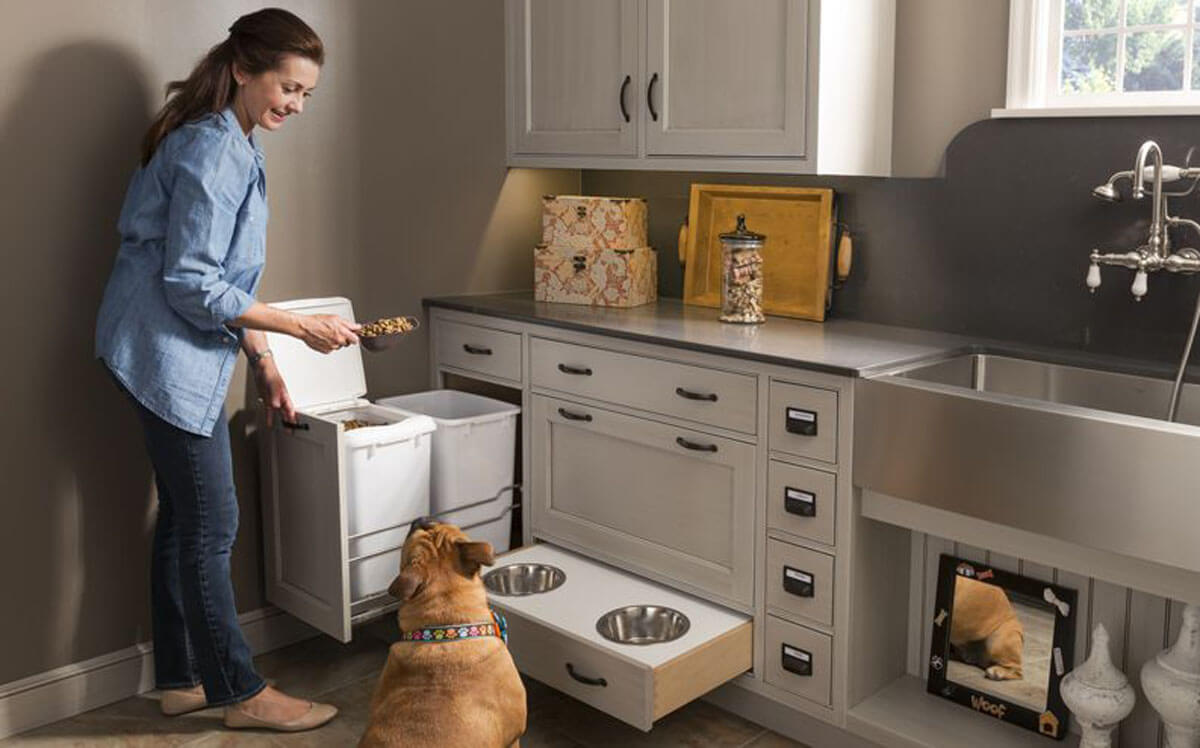
- Feeding Station Hidden in Cabinets
Feeding stations that integrate into cabinetry, stay out of walkways, and incorporate elevated bowls for healthier posture. A smart and clean solution for daily mealtimes.
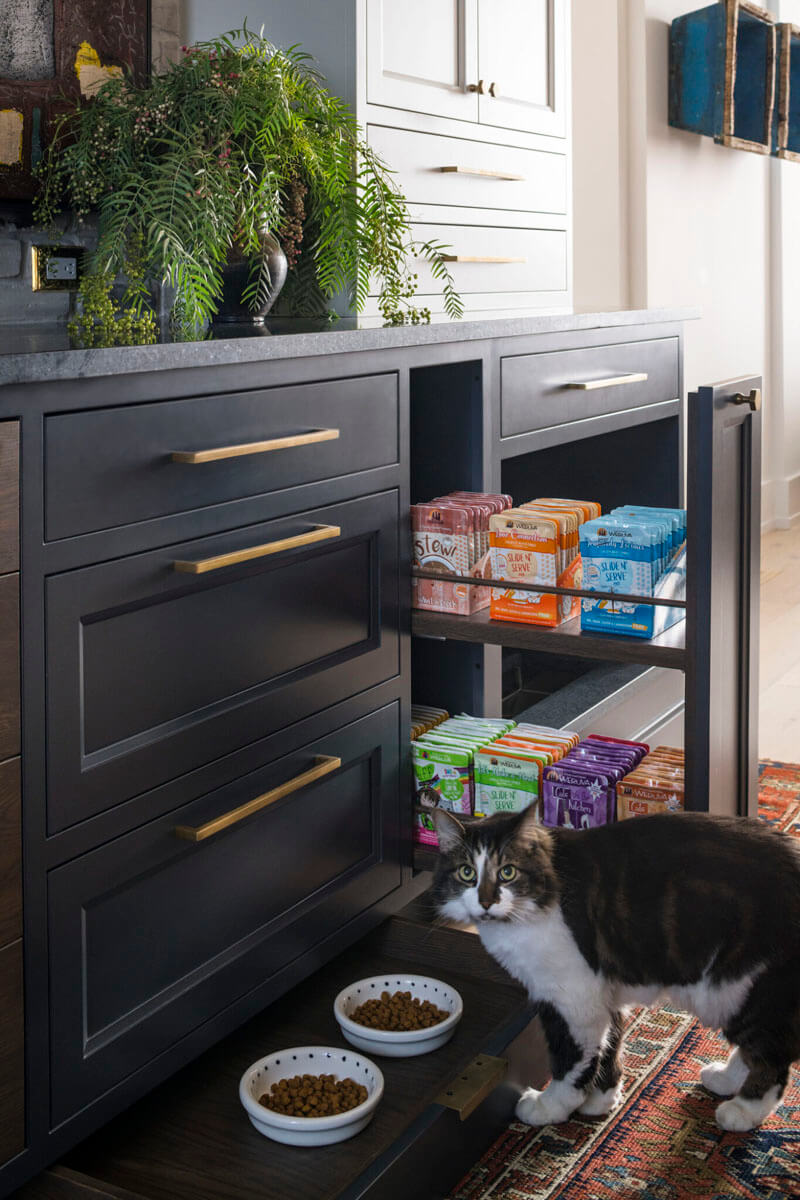
- Pull Out Storage for Supplies
Use a traditional pull out trash can or spice pantry to house your pet’s food and beloved treats! Let’s keep pet essentials accessible yet unobtrusive!
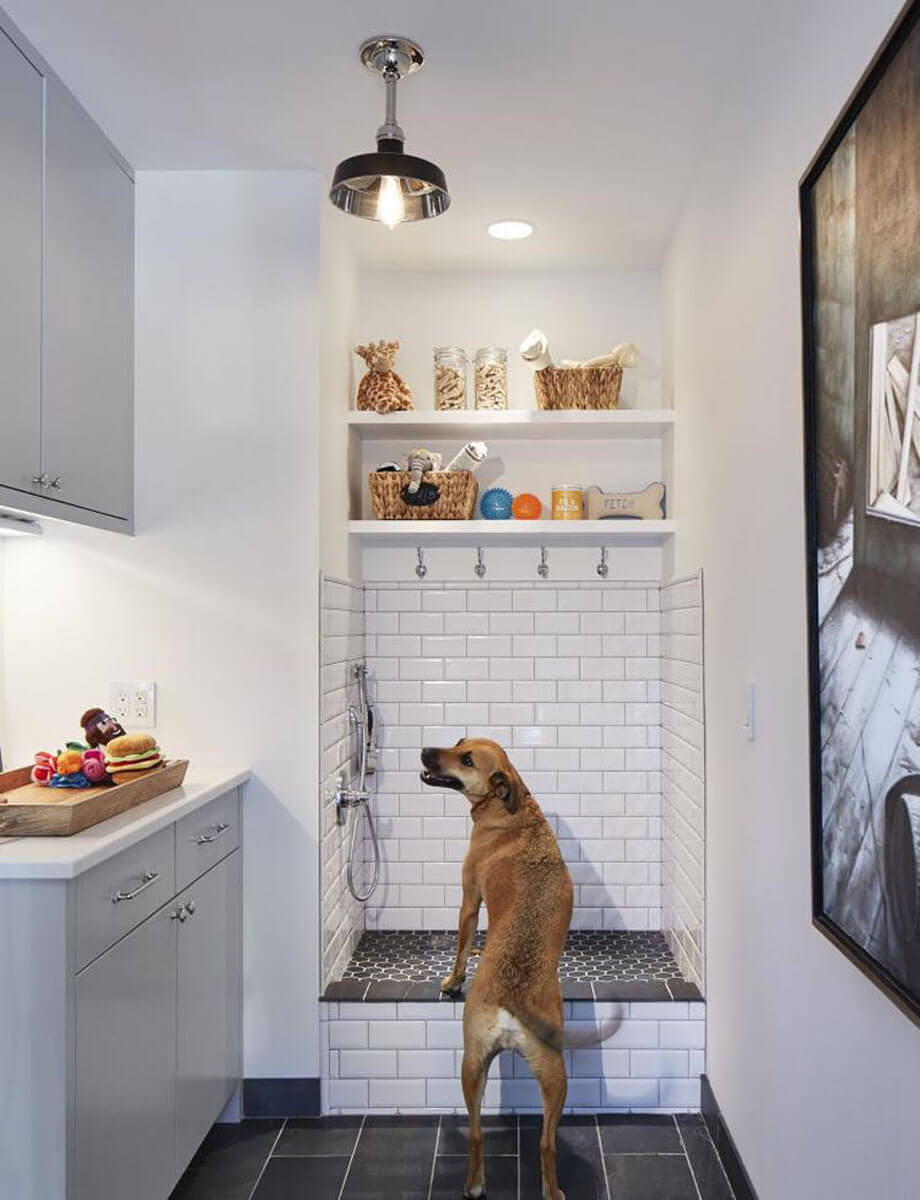
- Built-In Dog & Cat Washing Stations
One of the most practical additions gaining traction is the pet washing station. These mini shower areas—often located in laundry rooms, mudrooms, or garages—keep dirty paws and fur from tracking mess through the house. They can be designed with a handheld sprayer, waist-height platform for ergonomic washing, and slip-resistant surfaces for pet safety. Not only does this make grooming and post-walk cleanups easier, but it also helps preserve the rest of your home’s finishes by keeping mud, sand, and allergens contained.
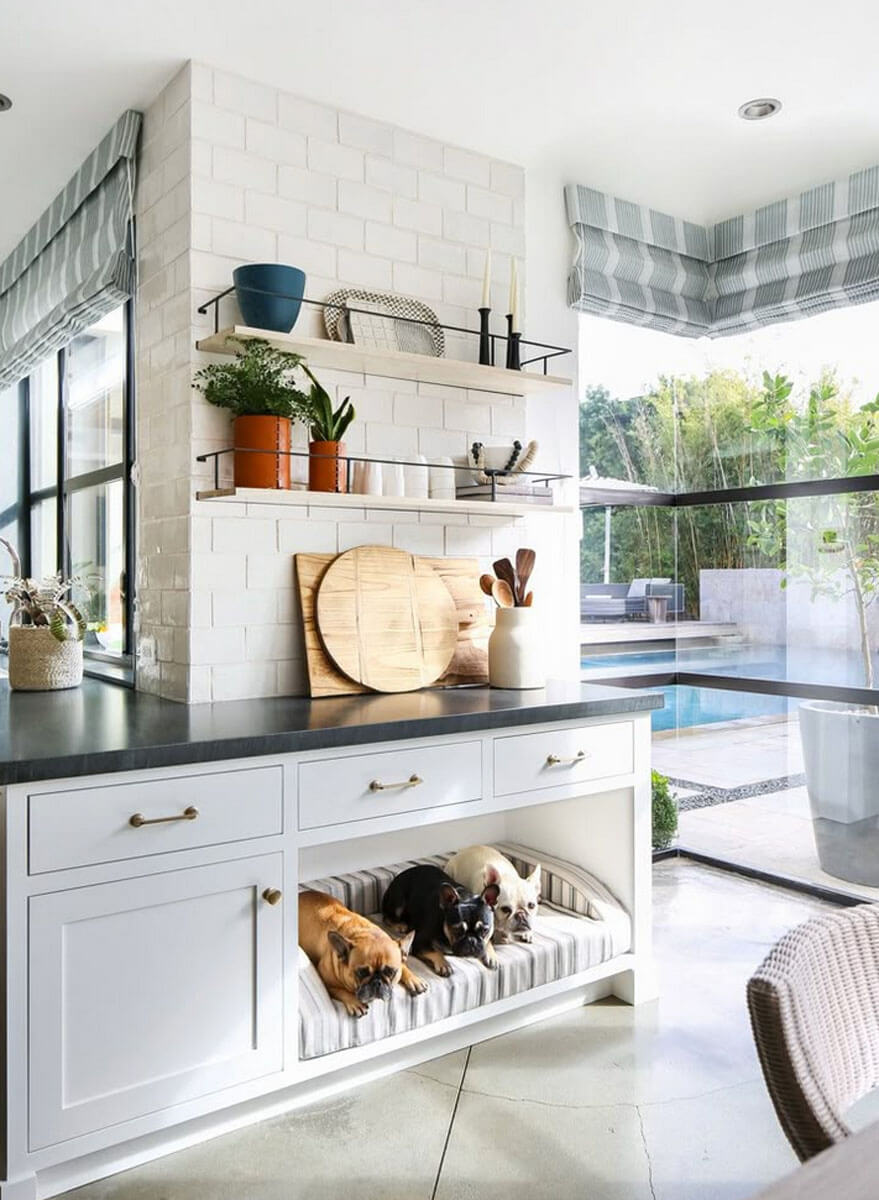
- Custom Nooks for Pet Beds
Designers are increasingly carving out dedicated sleeping nooks for pets within or under cabinetry. Whether tucked into an island, under a counter, or in a laundry room, these spaces can be customized with plush bedding, wood or tile finishes, and even soft lighting. They give pets a defined “home base” in the heart of the house while keeping floors clutter-free and maintaining a streamlined look.
Why It Works: The Pillars of Pet-Friendly Design
Here are three key considerations for designing with pets in mind:
- Physical Needs
Integrated feeding, sleeping, and washing areas make daily routines smoother for both pets and owners. - Emotional Needs
Pets benefit from cozy, secure spaces—like built-in crates or sleeping nooks—that offer comfort and a retreat when they feel anxious. - Safety Needs
Incorporating hidden storage for pet items, keeping cords tucked away, and using durable, low-maintenance materials ensure a safer environment.
Design Tips for Pet-Friendly Kitchens
- Use Durable and Easy-to-Clean Materials
Choose surfaces like stone or waterproof laminates to simplify clean-up. - Elevate Feeding Areas
Raised bowls (as in the pull-out feeding drawer) help reduce strain and improve digestion. - Optimize Hidden Storage
Blend pet zones into cabinetry with pocket doors or concealed drawers for clean lines. - Prioritize Flooring & Fabrics
Mix area rugs with low-pile carpet or textured tile to provide traction and reduce slipping. - Plan for Pet Movement
Consider play zones, clear pathways, and interactive elements to keep pets mentally stimulated. - Incorporate a Washing Station
Even a small tiled corner with a sprayer can make cleaning up muddy paws a breeze. - Add a Built-In Sleeping Nook
A dedicated bed area keeps pets close to the family while preserving the home’s aesthetic.

Final Thoughts
Blending pet amenities into your home is no longer a novelty—it’s increasingly expected by homeowners who see their pets as family. The KBIS insights show that thoughtful design can elevate pet care from functional to beautiful. Elegance and pet-friendliness can coexist effortlessly. Whether you’re a designer, homeowner, or pet lover, incorporating these elements ensures your home remains stylish, safe, and welcoming for everyone—even the four-legged members!

